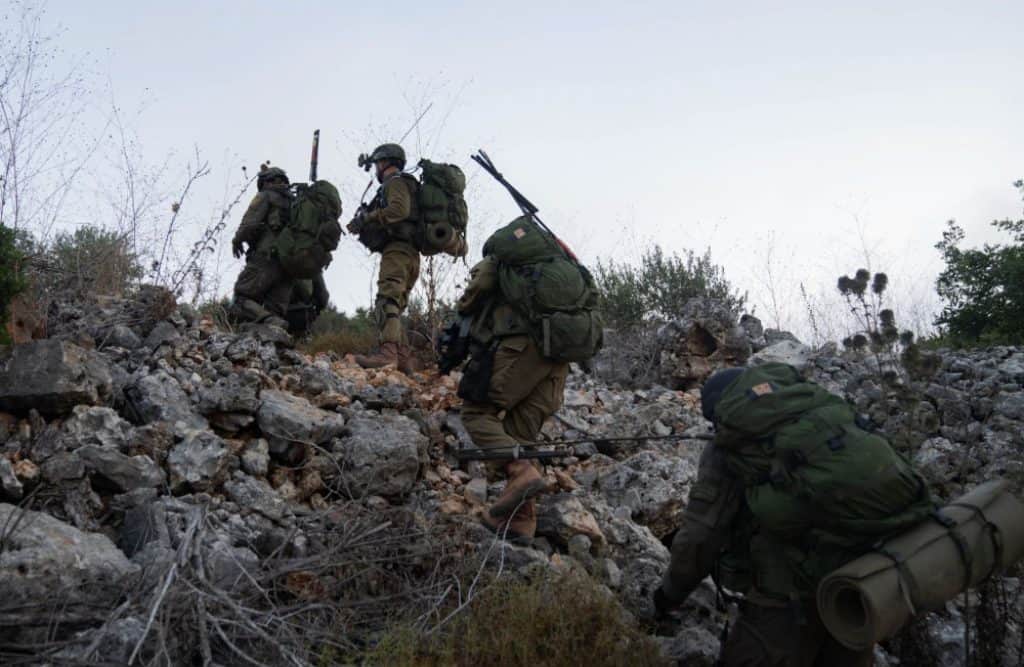
Hezbollah killed three Israelis during the week of July 7–13, including two civilians and a soldier. The Iranian-backed terrorist group then escalated attacks on July 13, immediately after an Israeli airstrike in southern Gaza that targeted Hamas commander Muhammad Deif and a Hamas brigade commander. After this escalation, Hezbollah appears to have slightly reduced the number and range of its attacks, but it keeps up daily pressure on Israel.
On July 12, there were only five incidents along the northern Israeli border that set off sirens in Israeli communities. All of them were very close to the border. For instance, a morning attack saw a projectile fired at Kibbutz Adamit on the border with Lebanon. “Throughout the day, numerous projectiles were identified crossing from Lebanon into the areas of Har Dov, Margaliot, and Metula in northern Israel. Several of the launches fell in open areas. No injuries were reported,” according to the Israel Defense Forces (IDF).
The IDF continued its policy of retaliating proportionately for Hezbollah attacks. It struck the area of Rachaya Al Foukhar in southern Lebanon, which the IDF said was the source of rocket fire. “Moreover, the IAF [Israeli Air Force] struck Hezbollah terror infrastructure, an observation post, and a military structure in the areas of Ramyeh, Jibbain, Tayr Harfa, and Kfarkela in south Lebanon,” the IDF stated.
After Hezbollah targeted Metulla, an Israeli town that sits right on the border of Lebanon, the IDF struck what it said was a Hezbollah observation post. The fact that Hezbollah maintains observation posts close to the border after nine months of war illustrates that the organization either rapidly rebuilds these sites or the IDF has only begun to scratch the surface of an extensive list of potential targets in Lebanon. It could be due to both factors, given that the Israeli strikes in Lebanon are often very precise, and Hezbollah seeks to maintain pressure on Israel.
On July 13, Hezbollah increased its attacks in the wake of an IDF airstrike in southern Gaza that targeted Hezbollah military commander Muhammad Deif. Hezbollah has linked its attacks on Israel with the war in Gaza since Hamas’s attack on October 7, 2023. Hezbollah claims to escalate in response to events in Gaza, but this is not always the case, and Hezbollah increasingly appears to be trying to fill the vacuum left by a significant decline in Hamas rocket fire over the last few months.
On July 15, the IDF intercepted several drones and a barrage of 10 rockets fired at Kiryat Shmona. Later in the day, another 15 rockets were launched at Kiryat Shmona, and falling shrapnel from interceptions wounded four IDF soldiers, one severely. Israel responded by hitting more “terrorist infrastructure” and another observation post in southern Lebanon, including strikes in Tebnit, Rab El Thalathine, Ayta ash Shab, Odaisseh, Kfarkela, and Houla. Some of these areas, such as Ayta ash Shab, have been hit numerous times. Recent footage posted online showed the extent of damage to one of the towns in southern Lebanon that has been impacted by the clashes.
The day after the July 13 escalation, Hezbollah continued to carry out attacks relatively close to the border using drones. For two days, the group reduced the number and range of its attacks, at least temporarily. Overall, Hezbollah has increased its use of drones since May, often employing them in precision strikes and to conduct surveillance. For instance, on July 14, the pro-Iranian site Al-Mayaden claimed that “Hezbollah inaugurated the Iranian Shahed-101 drone in the confrontations in southern Lebanon, a highly-maneuverable aircraft that is notably difficult to detect.”
Iranian state media also spotlighted its drones in a recent article, indicating that Iranian-backed groups seek to highlight their success in developing better drones throughout the war with Israel. Hezbollah puts out statements daily or every two days listing its attacks on Israel and sometimes claims new capabilities and milestones. For example, on July 15, the group claimed to use “guided missiles” in a strike on a site in Israel.
The IDF said it intercepted a drone threat from Lebanon on July 14 and several more attacks in the afternoon of July 15. In response, the IDF said it struck terrorist infrastructure and Hezbollah sites in Ramyeh, Meiss El Jabal, Bani Haiyyan, Ayta ash Shab, Houla, Bint Jbeil, Kfarkela, and Odaisseh in Lebanon. The list of locations hit on July 14–15 shows that most retaliatory strikes occur in the same areas, day after day.
The IDF continues to train for a possible larger war in the north amid these smaller clashes. Soldiers from the IDF’s 5th Brigade conducted a brigade-level exercise in which they hiked over rocky terrain and practiced fighting in hilly areas. The IDF said a “surprise” drill was also conducted with the 920th Reserve Battalion of the 769th Brigade. The 769th guards the northeastern Galilee border area with Lebanon, including Kiryat Shmona, Metulla, and the hills overlooking these towns.







